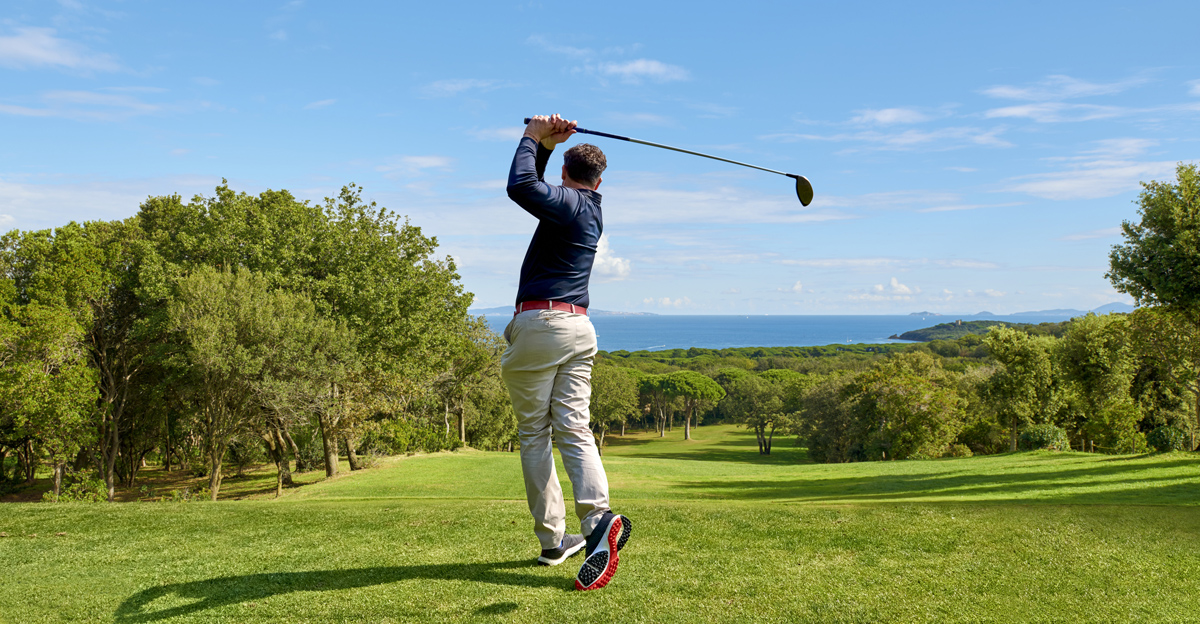Tiger Woods made a miraculous return to golf today at the 86th Masters tournament, less than 14 months after a car accident threatened to end his golf career.
Woods was hospitalized following the Feb. 23, 2021, crash and underwent surgery to stabilize his lower right leg, including the insertion of rods, plates and screws.
Many thought he would never walk again, never mind compete at Augusta National, one of most grueling courses and competitive fields in the sport.
The road back has been challenging for Woods, and holds many valuable lessons for amateur golfers working back from an injury or gearing up for the upcoming golf season.
Whether you are just returning to the links after a cold winter or coming back from an injury, the Hartford HealthCare Bone & Joint Institute and its personalized Golf Medicine Services program can help you get back in the swing of things fast — even if you aren’t a superstar like Woods.
Getting back on the course
If you are ready to get back on the golf course following an injury or surgery, you should start by discussing your return with your doctor and physical therapist.
“It may also be a good idea to consult with a golf pro for any technique modifications, if needed. Our body is very good at compensating after injury or surgery,” said Sarah Emlaw, DPT, of the Hartford HealthCare Bone & Joint Institute at Hartford Hospital.
Your plan should ease you back into golf with a structured program, starting with chipping and putting, progressing into short irons, then longer irons and eventually woods and drivers. It is important to listen to your body and allow for adequate time to recover in between sessions, explained Emlaw.
For an even more in-depth analysis, a Titleist Performance Institute (TPI) movement screen or golf analysis can be done to look closely for any compensatory mechanisms and appropriate mechanics.
Golf-ready exercises
Improving your overall strength and mobility can help prime the body to kick off golf season. Every golfer is very different regarding their strengths and weaknesses, but in general, most can benefit from:
• Dynamic stretching vs. static stretching
• Pelvic tilts forward and back
• Hip mobility into rotation – both directions, both legs
• Single leg rotational stability
• General core strengthening
Injury prevention
There are common types of injuries golfers can face, such as, back pain, golf elbow, rotator cuff injury, tendinitis in the wrist and knee pain.
Working with a professional certified in the Titleist Performance Institute movement screen can identify limitations or deficits in your mobility and/or stability. Once identified, they can customize a program for you to address any limitations in hopes of avoiding injuries down the road.
Ways to improve
A variety of assessments can be completed in the Hartford HealthCare Bone and JointMotion Analysis Lab to help you achieve your goals. The golfer is brought into the Motion Lab and body markers are placed on the upper and lower body to track motion during a full golf club swing. The results are analyzedand compared to profession golfers, thenused to enhance overall muscular fitness, reduce the possibility of golf-related injuries, and improve in-game performance. Patients at the Bone and Joint Institute also have access to nationally recognized golf pros for transition of care and return to golfing programming, as well as strength and conditioning specialists with TPI certifications.
There is plenty of research supporting that a proper rehabilitative, warm-up and/or strength and conditioning program can improve maximum club head speed, driving distance, driving accuracy, ball trajectory, handicap, and consistent ball strike.
For more information about the golf medicine services offered at the Bone and Joint Institute, click HERE.


